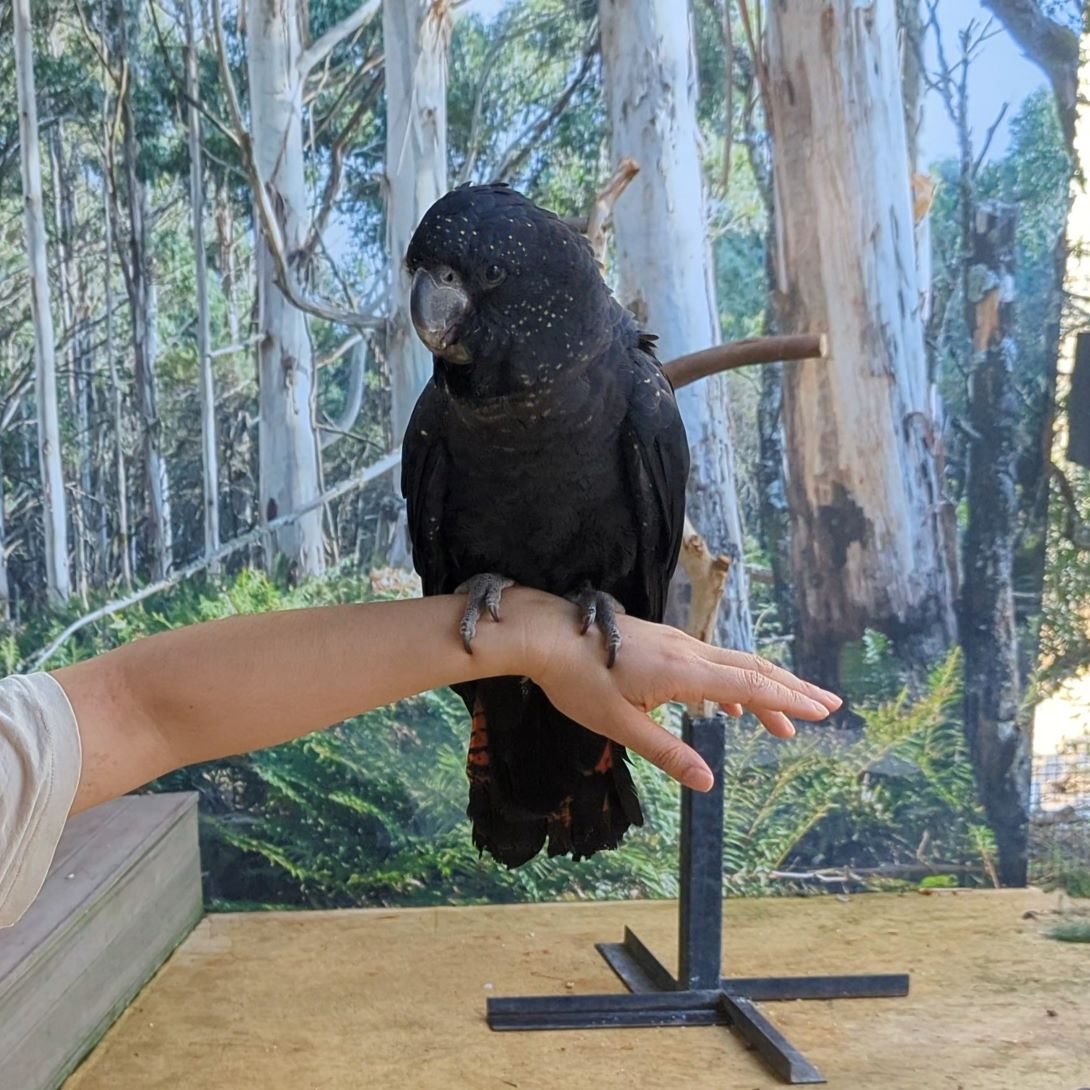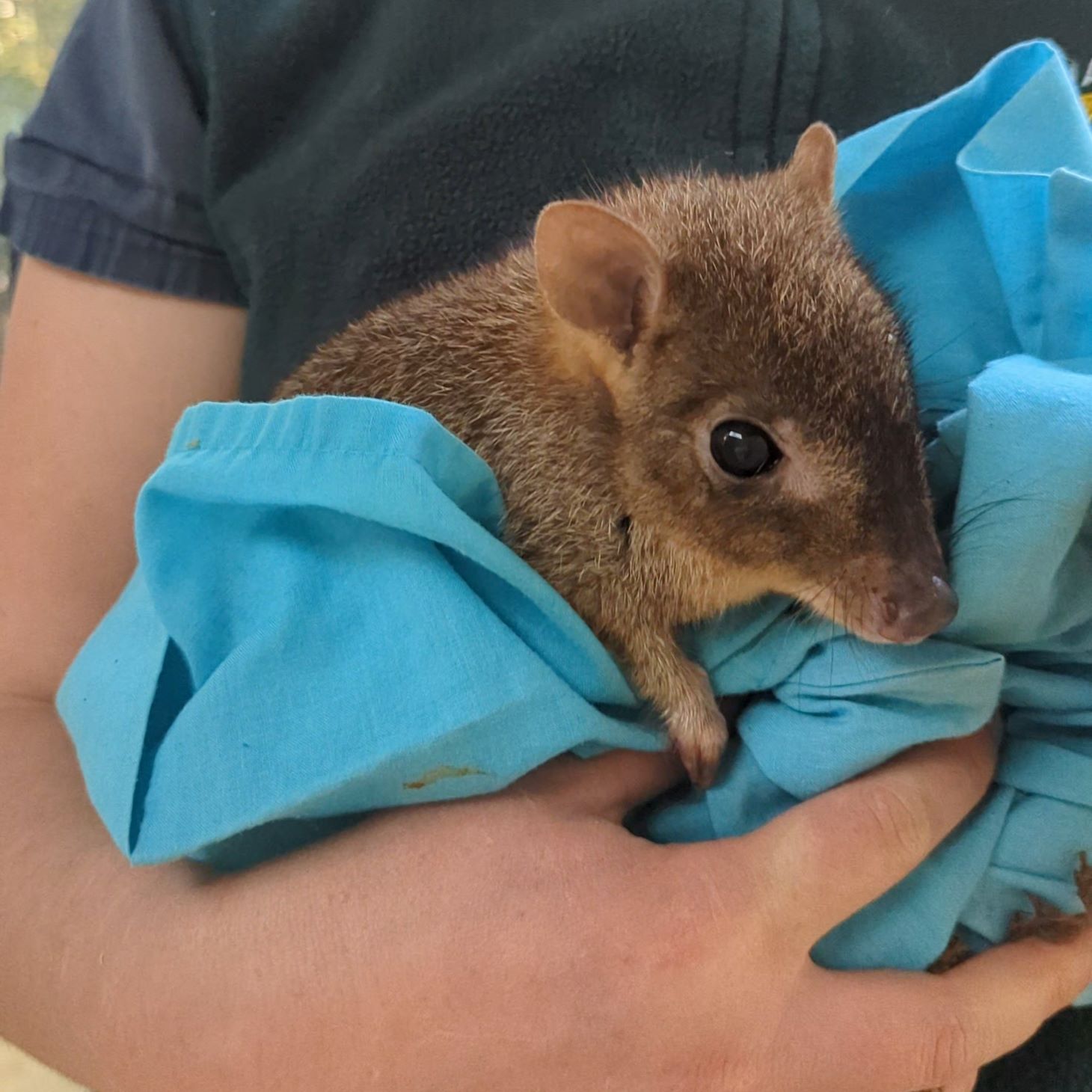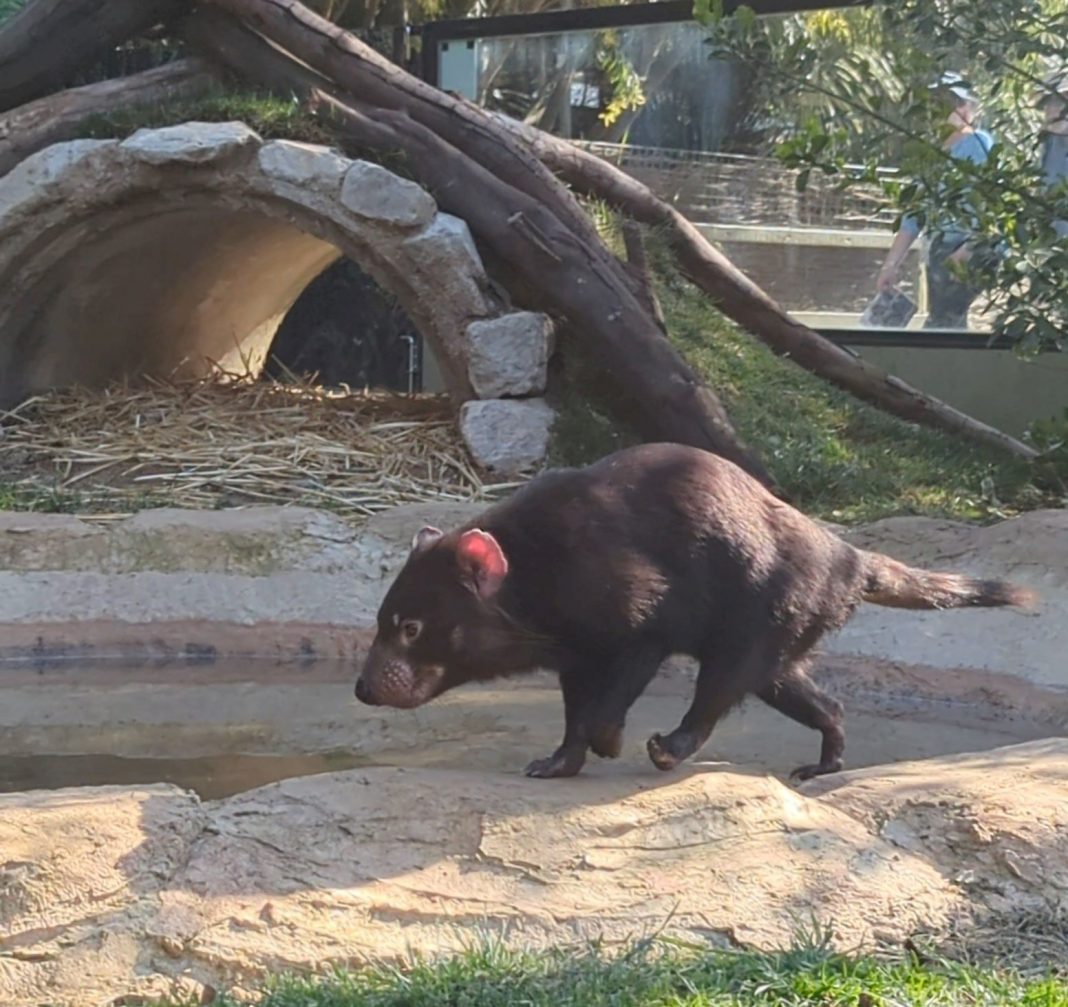The National Zoo & Aquarium is shining a light on a furry friend this National Threatened Species Day, 7 September, as they welcome three Tasmanian devils – Manchester, AC and Kiara.
The three-year-old devils were born at the Devils @ Cradle, a conservation facility in Tasmania. In their new home here in Canberra, they take on the important role of ambassadors for the species.
“They are surplus to breeding this year; that’s not to say they won’t be breeding down the track, it’s just that this year their genetics are already well represented,” says Emma Drummond, Team Lead of Natives at the National Zoo & Aquarium.
Often mistaken to be vicious predators as the last surviving marsupial carnivore, the creatures are, in fact, shy and non-territorial. The team from the zoo say their new residents are settling in nicely, loving their naps in their dens and logs, and spending afternoons playing in the sunshine.
“They are doing lots of exploring, getting into mischief, climbing trees, they’re doing really well,” says Ms Drummond.
Hunted to extinction by dingoes on mainland Australia around 3,000 years ago, the devil population in Tasmania remained stable as there were no dingoes on the island.
In 1996, the first cases of Devil Facial Tumour Disease were recorded. Since then, the disease and external factors such as habitat destruction and road fatalities have nearly decimated the native population. There are now 80 per cent fewer Tasmanian devils alive than in the mid-1990s, with fewer than 25,000 of them remaining in the wild.
Why are Tasmanian devils important? The nocturnal dog-like animal plays a critical role in its natural habitat keeping down the number of invasive species such as cats and rats. The impact of their population loss is being felt in Tasmania as the numbers of bandicoots and other small native animals drop without this important predator.
Established in 1996, National Threatened Species Day marks the day that the last Tasmanian tiger (Thylacine), Benjamin died of suspected neglect at a zoo in Hobart in 1936.
Unfortunately, Australia continues to be one of the world leaders in rates of extinction, ranking fourth for total extinctions but taking the top spot for the most mammals lost. Since European settlement, more than 100 Australian flora and fauna species have been wiped from the Earth, over 30 of which are mammals.
Invasive species remain the leading cause for most fauna extinctions in Australia with our native animals unable to protect themselves. The main aggressors, cats and foxes, hunt differently from native predators, leaving native prey vulnerable. Other threats include habitat loss and climate change.
Creating awareness of our threatened species is very important as once these species become extinct, they are gone forever. Jemma Walsh, manager at the National Zoo & Aquarium, has a few tips on how we can all help our threatened species survive.
“Keeping cats and dogs inside, making sure you’re driving carefully on the roads, keeping those hollow logs and plantations around, planting native trees and grasses,” Ms Walsh says.


A number of threatened and endangered native species are housed at the National Zoo & Aquarium, including the red-tailed black cockatoo, superb parrots, bush stone-curlew and brush-tailed bettong.
“We are holding some activities this weekend for National Threatened Species Day,” Ms Drummond says. “There are a few extra keeper talks, different activities to get involved in and you can see the devils out and about, getting fed anytime in the afternoon.”
Find out more about the National Zoo & Aquarium’s conservation efforts here.
Canberra Daily is keen to hear from you about a story idea in the Canberra and surrounding region. Click here to submit a news tip.



